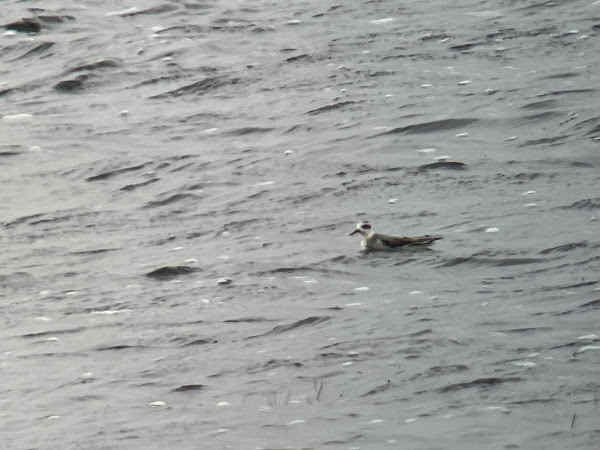Cian Cardiff, Bird guide @ The life of an Irish Birder/ Ornithologist @ CC Ornithology/ writer/ photographer/ public speaker/ Please contact Cian via email Ciancardiff14@gmail.com or WhatsApp at 0871458168.
Wednesday 18 October 2023
Patch birding madness, Cahore marsh, October 2023.
October can be a good month for patch birding given autumn migration is in full swing. Though this year I didn’t expect my patch to go on such a good run! On my first visit for some time I picked up a glossy ibis flying in the distance before two more flew close by, leading me to think it was likely that three birds had been present. After a while I saw the three together. I then scanned picking up one then two juvenile curlew sandpipers, a rare bird for the patch and only my second and third ever! Followed by scanning to see a first-winter grey phalarope swimming and picking at the water’s surface at the south end of the now flooded marsh! A patch tick ✔️
Glossy ibis Cahore marsh, Ruff also with the 3 ibis in flight...
Another visit a few days later and I had added cattle egret, three greater scaup (another patch tick ✔️) both Cetti’s warbler sang for a few hours also that day. And I then went on to scan a large mixed flock of black-tailed godwit, European golden plover and Eurasian teal to discover a long-billed dowitcher feeding among the mixed flock! Yet another patch tick ✔️ and one of my most desired!! Rev dowitcher proved to be very elusive and not showy when seen over the several days. Often just seen and heard while in flight around various areas of the marsh. And not to forgot the beaded reedlings that are regularly flitting among the reedbeds around the marsh, often catching glimpses or snatches of their characteristic ‘ping ping’ calls.
First-winter Grey phalarope and Juvenile Dunlin and 2 Curew sandpipers...
A visit the next day was in order to see what could be found and what may still be present still on site. I scanned the tufted duck flock that has been present recently to find the three greater scaup still present along with a very intriguing individual. Not a greater scaup or tufted it seemed. The head shape had immediately struck me, the peak to the back of the head compared to the rounded head of the greater scaup especially really stud out! I couldn’t be looking at a lesser scaup on my north Wexford patch could I? After a few hours of distant views and phonescoped images I rang my father to let him know what I suspected I had found and then my good friend Brian Mccloskey for his views on my poor record images and for his knowledge on lesser scaup/diving duck identification. After eventually getting good views and better images I sent them onto Killian Mullarney whom was speedy to respond with exactly what I wanted to hear, he suggested that my bird looked good for a first-winter male lesser scaup but it would be good to see the bill pattern better as it appeared to show quick a lot of black away from the nib. I managed to capture some poor flight images of the bird in question and this nailed a perfect wing pattern of pale inner wing bar and greyish outer wing bar! I could also see the grey on the upperparts, mantle beginning to come through and white beginning to emerge along the brownish flanks. The bird often appeared slightly smaller and slighter than the tufted ducks it was present alongside and far smaller and slender than the three accompanying greater scaup.
First-winter male lesser scaup,with tufted duck, a first for Cahore and second for Co, Wexford...Also a female type Greater Scaup in flght image 1...
I saw the bird again a couple of days later in fantastic morning light while guiding and could see the bill pattern (black restricted or mostly restricted to the nail, can be more valuable in first-years I believe) was just about spot on for a pure lesser scaup, good flight views also again and I don’t think there can be much doubt about this one! A mega for Co, Wexford and my patch! A selfinds tick ✔️ also to just add to the excitement!! While on this day’s guiding event I picked up a juvenile Goosander flying over the sand dunes and around the marsh, my fifth patch tick ✔️ in the month of October after a spell without any over the summer months (Which is usually to be expected when things can be very quiet on the patch).
Cattle egret and Greater scaup...
With thanks to everyone whom gave me feedback on the lesser scaup.
Subscribe to:
Posts (Atom)
Patch birding madness, Cahore marsh, October 2023.
October can be a good month for patch birding given autumn migration is in full swing. Though this year I didn’t expect my patch to go on ...

-
Grey Goose Identification - Part One - Greenland vs Russian White-fronted geese Two first-winter and adult Russian white-fronted geese - To...
-
The Grey-bellied Brant in Ireland What is a Grey-bellied Brant: The grey-bellied brant is a brent race (though hybrid has never been fully e...

















